Happy Birthday Lee Trevino!
Published: Last updated:
Standing on the small street leading to Lee Trevino’s expansive and expensive Dallas home, it’s nearly impossible to see the size of the lodging from outside the front gate. There is a long, winding concrete driveway, a large creek on the right side and towering trees overshadowing the house. Not until you’re almost touching the window-paned front doors do you have a sense of the massive structure; featuring a huge v-shaped roof, a large garage, a putting green in his back yard and a massive billiard room with a wall covered with magazine covers.
Trevino has come a long way in the 75 years he has been on this earth. He was brought up in a tiny shack with a dirt floor (and no running water or indoor plumbing) about three miles away from the palace in which he lives today.
His house these days is set on five acres, where he happily resides with his wife, Claudia, and two dogs, Lu Lu and Mini. When his wife showed them their new house, a dozen years ago, Trevino suddenly realised the property was where he had once hunted rabbits and birds as a kid, sometimes for the only food the family might have. “They’ve paved the walls of the creek now. It’s a hell of a lot nicer than it was. Everything is.”
Having been in the spotlight for so much of his life, Trevino is now happily and willingly fading into golf’s past, having finally achieved the only true goal he ever had. “When I die I’m not going to take any of this with me, but I’ve achieved my goal. My kids [he has five, from three wives, aged 50 to 21] are not going to have to go through what I did,” he says. “If they want to go through it they can; but they don’t have to, and that’s the thing that makes me feel good.”
Trevino never knew his father. He was brought up by his mother and grave-digging grandfather. He had no money, no golf clubs and no golf lessons. He was introduced to the game by his caddie master uncle, Lupe, who never played the game himself, but showed Trevino how to caddie for rich private club members and taught him the basics of greenkeeping. In his rare spare time, the young Trevino would steal away and teach himself a game and swing which would one day rule the golfing world on both sides of the Atlantic Ocean.
Lee left school at 14 and would hustle for money, using a taped-up Dr Pepper bottle as his club (a club which his kids still have); or putting one-handed for 18 holes against all comers, honing his game, knowing any loss meant paying out money he didn’t have. He would play anybody, any time, drunk or sober, in between caddieing and shining people’s shoes. Now, Trevino relaxes in his favourite overstuffed easy chair at home. He cried when America elected a black man as President, and still cries watching his favourite movies, Secretariat and Seabiscuit, on his massive TV. “The older you are, the easier it is to be emotional,” he says. “When I was growing up, I couldn’t do that. I was too hardened.”
But Trevino didn’t just overcome his humble beginnings; he transcended them. From the dusty shack, long-since paved over for a Texas superhighway, to his current multi-million dollar lifestyle (complete with luxury automobiles and custom tailored clothing) he has travelled far. Possibly no one in the game achieved more with less than Lee Buck Trevino.
“I never thought about this growing up,” he says. “I couldn’t. All I was thinking about was a better house, a nicer car and drinking more beer. Now I’ve got the house, have a really nice car; but don’t drink anymore.”
The non-stop, on-course banter which he became famous for, is entirely homemade. Growing up as a caddie at Glen Lakes Country Club in Dallas, caddies weren’t allowed to play, so Trevino and his friends carved out their own three-hole course in the woods next to the course. They could only scrape together one set of clubs, which had to be shared among all players.
“We’d be walking down the fairway yelling, ‘Hey Pedro, I need the 5-iron. Hey Whitey, I need the putter,’ and that’s how I started talking all the time on the golf course.”

Trevino hasn’t played in an individual professional strokeplay event since March 2011, preferring his daily golf games at his trio of Dallas private clubs, where he still takes on all-comers and is not opposed to money changing hands. “When I showed up, people said where the hell did he come from and when I leave, people will say where the hell did he go? That’s just the way I want it.” There follows the trademark hearty laugh, which earned him the nickname “Merry Mex”.
When he returned home in 1965 from four years in the Marine Corps, travelling all over Asia, a falling out with his mentor Hardy Greenwood led him to El Paso, Texas. There he continued his gambling and hustling ways as an assistant pro at Horizon Hills Golf Club. Raymond Floyd, already a PGA Tour winner, came to El Paso in 1966, looking to make easy cash from the money-heavy West Texas crowd. Floyd and his financial backers rolled up to the clubhouse, and Trevino bounced up to him and grabbed his clubs, made him welcome and began shining his golf shoes.
While his handlers went out to get a cart so Floyd could scout the course, the young North Carolina golfing hotshot asked his new helper who the local star player was he would be facing in the three-day match. “That would be me, Mr Floyd,” Trevino said, looking up from his cleaning duties. Trevino won the first day, shocking Floyd, who immediately asked for an emergency nine to reclaim his money. “I’m sorry, I can’t, Mr Floyd. I have to put in all the carts before dark,” Trevino truthfully told him.
The result was the same on day two before Floyd finally won his money and some pride back on the third day when Trevino narrowly missed an eagle putt on the 18th hole. By then, though, Trevino realised his education in the school of hard knocks was finally complete and the next hurdle would be the PGA Tour. He turned pro in 1967 and shocked the golfing establishment by finishing fifth in the US Open at Baltusrol; and was later named Rookie of the Year, never missing a cut in his first season on tour.
But his biggest hurdles continued to appear off the course rather than on it. Trevino was staying at the Union Motel near the US Open course, but did not own the required jacket to eat at the on-site restaurant, so was forced to walk two miles each night to a nearby Chinese where he could dine wearing the only clothes he owned.
“Years later, the owner of the Motel wanted to have a big ceremony when I returned and presented me with a jacket,” Trevino says. “I told him, ‘Keep your damn jacket. I have plenty now. Where were you when I needed this?’ Life is all about passion,” he says. “You have a passion for your job, for your marriage, for your life. I had that passion for golf and nobody could take it away from me.”
He returned to the US Open in 1968, winning his first major by four shots over Jack Nicklaus, for his first-ever PGA Tour win; and in the process became the first golfer ever to shoot all four rounds in the 60s in America’s national championship.
Afterwards, Trevino paid tribute to his heritage as the first Mexican-American golfer ever to win a major, telling the media: “My only goal is to make enough money to be able to buy The Alamo and give it back to the Mexicans.”
The Open victories
Trevino’s first true links experience, his first-ever trip to Europe, came in the summer of 1969 when he played in a European Tour event at Royal Birkdale and the Open Championship at Royal Lytham and St Annes. For a young Texas golfer who grew up on hard, unwatered public courses, excelling with his short game and bump and run, links golf fitted his game like a glove.
“I learned to play in the wind in Texas with an extremely strong grip,” he says. “I learned to bump and run the ball. That’s how I played Tension Park back home. It never had any irrigation and they didn’t water the courses in the UK. Because of my short, compact swing, the bad weather didn’t bother me because the more clothes I put on, the more compact my swing got. I would punch and run the ball all the time.”
Perhaps not surprisingly, Trevino achieved as much success at the Open as any of the other major championships. As well as his two victories, he had six top-five finishes, which included a tie for third at the Old Course in 1970.
Trevino arrived at Royal Birkdale for the 1971 Open, coming off his second US Open triumph, a play-off win over Nicklaus, and playing really well. “I loved Birkdale the first time I ever saw it for a tournament. The five par 5s and the great links feel were perfect for me. I knew Jack could hit it 40 yards past me and reach the greens in two, but that didn’t bother me. I could hit my 3-wood as far as Jack and it would roll 100 yards and his wouldn’t. I was a pretty good bunker player thanks to the lesson I had received from Gary Player. I loved the course and really felt I would do well there, but I never dreamed I would be playing as well.”
When he arrived at Birkdale, he found fellow Texan and singer Jimmy Dean sleeping on a park bench outside the Prince of Wales Hotel in Southport, where Trevino was meant to be staying. He invited him inside. “Man, did we do some partying,” Trevino recalls. “I went into the owners’ office at the Kings Way Casino, to cash a cheque to pay for my casino bills. He told me, ‘You can’t win here at my casino. Just hang out with me, greet the customers, drink some wine, have a good time’.”
So, during his Open week in Birkdale, that was his nightly plan. Get in the casino after dinner, greet plenty of people, drink plenty of wine, and stagger back across the street to his hotel early the next morning. “It actually worked out great,” he says. “We didn’t play until about 3pm every day, so I would get into bed about four and get up at noon. I was as fresh as a flower each round and the rest of the players would be worn out from waiting.”
He took a one-shot lead into the final round, playing with famed Asian player Lu Liang Huan, and got off to a fast start on the last day with birdies on five of the first six holes. Mr Lu (as he was known by fans and fellow players) had played with Trevino while they were both in the military, and knew of his skill and mental toughness. “After about six holes, Mr Lu looked at me and bowed and said, ‘Hey Bird’ (which is what he called me) ‘do you want to play through?”
Trevino was in control most of the match until the 17th, when he hit it in one of Birkdale’s famous mounds and took a seven; but he managed to par the 18th to win his first Claret Jug. “After paying the hotel bill, the wine, my wife and my caddy, plus the $5,000 I had promised the local nuns if I won, I made $13,500 for the win, but lost money on the trip,” Trevino says. “In fact, I lost money the next year at Muirfield. I’m the only guy to win two Opens and not make a nickel.”
To prepare for his title defence in 1972, Trevino took a different route of preparation. He asked his fellow Texas golf and military friend, Orville Moody, to find him a place where he could train in peace and privacy. Moody knew of a Texas course which had not opened yet, on a nearby Army base, and arranged for Trevino to make it his Muirfield Open training camp.
“I played 18 holes every morning, running after every shot,” he says. “Then, I would come home and have breakfast, then hit balls for a couple of hours. I’d have lunch, swim with the kids and then at 4pm, play some more. I did that for a week, before going over to Scotland. I was practising bump and runs and all the other shots I would need. My strong suit was the driver. I could put it on the sidewalk, and I knew I could. I never feared anything. It didn’t matter to me. If it had a fairway I knew I would hit it. If it had a green I knew I would hit that. It didn’t matter if it had animals and snakes down the sides, I would be in the fairway.
The 1972 Open quickly turned into a three-man contest with Jacklin, Trevino and Nicklaus. “Early, in Friday’s third round, my boy Jacklin was gone. He was six shots ahead of me at one time and Jack was way behind and had caught up.”
Of course they didn’t count on Trevino having his 1938 Helen Hicks dimpled wedge; a club he had picked out of a barrel in upstate New York for $2. “From the 14th to the 18th in that same third round, I chipped in or holed huge putts, five times for five consecutive birdies. And then in Saturday’s final round I chipped in again twice more,” Trevino says.
On the 17th on Saturday, Trevino and Jacklin were tied and after Trevino hit it in the back bunker, Jacklin motioned for Trevino to play, even though he wasn’t away. After Trevino chipped in again for a par, Jacklin was so rattled he three-putted from 15 feet and a second Claret Jug was Trevino’s. “He went crazy, he wanted to quit,” Trevino says of Jacklin. “He said this game isn’t fair, the golf gods were against him, and he didn’t want to play anymore.”
Trevino’s loud, outgoing personality bothered Jacklin on many occasions and led to another famous and true Trevino quote, when they played in the semi-finals of the World Match Play at Wentworth in the early 1970s. Walking to the first tee, knowing what to expect from his opponent, Jacklin turned to Trevino and told him they were going to have a serious match with no talking.
“Tony, you don’t have to talk today, just listen,” Trevino said, and followed it with a huge laugh. The pair combined for 26 birdies and three eagles in the 36-hole match; but at the end there was only ever going to be one winner – and it was Supermex.
 Beating Jack
Beating Jack
Other than the pair of Open victories, Trevino says his greatest major thrill was beating Nicklaus in an 18-hole play-off, to claim his second US Open title at famed Merion Golf Club. “Anybody can win a sudden-death play-off,” he says, “but to win over 18 holes, when I beat the best there is, it gave me the confidence and I felt like now I belonged. I knew I could play with the best.”
On the first tee, Trevino playfully tossed a rubber snake at Nicklaus, which his daughter had put in his golf bag, and then grabbed the rubbery object, causing a woman in the crowd to scream, and Nicklaus to give out a hearty laugh. (Trevino says Nicklaus knew what was coming, and actually asked to see it.)
While his major thrills were glorious, Trevino has a searing regret marked indelibly on his memory; namely his inability to win a Masters title. It was the only one of the four majors he never won, and he believes it had more to do with his clash of personality with Masters chief Clifford Roberts, than anything else.
“It wasn’t the golf course which was the problem,” he says. “It was Cliff Roberts. No question I would take a different path today. I would keep my mouth shut, play golf and respect the fact that Mr Cliff Roberts was the one who ran the place. Back then, I felt like he should respect me, and see where I was coming from.”
Trevino’s long-running feud with Roberts began when his chauffeur was not allowed to enter the front gate of Augusta National on a Monday, with Trevino in the back seat, because he didn’t have a ticket, and none were available for sale.
“After that,” says Trevino, “we were arch enemies. I don’t mind a dictator, because you sometimes need one at a golf club in order to get things done. But, a dictator has to listen to reason.”
“It also disappoints me when players who have massive amounts of talent – for varying reasons – misuse it; most notably former Open Champion, John Daly. He was a lot better than I was. Ask anyone on the Tour, who had the most talent, including Tiger, and they’ll say John Daly had the most talent out there. But he didn’t have my attitude. He screwed it up. John thought he was bigger than the game at one time, and you can’t do that. There are rules in every sport and he just got off the track. You can’t do that and by the time he was back on the track, he had burnt all of his bridges.”
Trevino also believes Tiger Woods should build a bridge, with his old coach Butch Harmon. “I would call a realtor in Henderson, Nevada, and I’d find out where Butch lived and I’d buy the house next door,” he says of the former world No.1’s travails. “I’d go over and ring the doorbell and say, ‘Hi, neighbour,’ and get back with Butch. I’m sure there’s bad blood there, at least that’s what I’ve heard. I haven’t talked to Butch in years, so I don’t know how he feels with Tiger and I don’t know if Tiger is too proud to ask for the help and if he asked for help if Butch would give it to him. But I think they speak to each other when they see each other at tournaments. If they do that, I don’t see why two grown people can’t sit down. He’s all messed up right now.”
Trevino was burnt himself – literally – in 1975 when struck by lightning on the course during the Western Open in Chicago, causing a back condition which still bothers him today. “After the lightning hit me, I had nowhere else to go. I didn’t have any other options, I had to come back [to the Tour]. If I had a Masters degree in something else, I would have quit. You don’t think about quitting when you don’t have any other options.”
Trevino played on six Ryder Cup teams and was captain of the 1985 American team, which lost decisively to the Europeans (captained by his old foe Jacklin). He says now that he loved the entire experience, because he was finally part of a team; something he had never experienced until then.
Trevino spent the whole week at the 2012 Ryder Cup matches, just outside Chicago, where he acknowledged how much the biennial competition had changed. “We used to share the same locker room and the same media room. We used to share the dining room. I would go and eat with Brian Barnes and those guys. I didn’t hate them. Now, if you throw a knife in there, they would kill each other.”
After retiring from the main Tour, he spent six years as a television commentator, a very unsatisfactory experience he says, because of the amount of wasted time before broadcasts, which he partially filled with drinking. When he left TV in 1989 to join the Champions Tour, he stopped the alcohol intake for good.
“Now, I haven’t had a drink in 23 years. It wasn’t a problem for me, per se; but I wanted to be a better example to my kids. I didn’t need that drunk stuff and didn’t need that drinking.”
He is more than content to spend most of his days at his Dallas home with his third wife, Claudia, whom he calls his “rock”. His considerable golf winnings, including an all-time record 29 times on the Champions Tour, are protected by a professional investment firm and audited twice a year to make sure there is no unexpected loss.
His six major championship trophies are proudly displayed on his wooden mantel at home, along with some Ryder Cup mementoes and World Golf Hall of Fame Plaque. The rest of his golf honours, 89 tournaments worldwide, have long since been trashed.
“I tell people I don’t do anything all day long, and don’t get started with that until noon,” he says with another trademark laugh. “I had a guy call me about writing a book the other day, but I don’t need that. I worked my entire life, why should I have to work now?”
There is always more casual golf to play, more fun trips to take. He is spending the entire month of October at Pebble Beach with his wife and dogs. And more stories to tell. The one Trevino would like people to tell about him is simple. “I made it as a poor man in a rich man’s game. I broke the mould because nobody had ever won like this, with my background. I made it in a rich man’s game, that’s what I’d like for them to say.”
 The future
The future
Trevino has always been a man of the people, but he doesn’t feel the game is doing enough to attract newcomers and keep people keen. He gets passionate when asked about the state of the game.
“I think it’s in trouble,” he says. “I know that it’s very exciting on tour, but it’s not exciting for a lot of people to have to play these courses that they’re building for the tour players. They build these hard golf courses, and now they’re talking about playing the forward tees. They should have never built those back tees in the first place. Why do you want a golf course that’s 7,400 yards long? I mean the majority of your members are elderly, and they can’t hit it anywhere.
“We build these courses that are supposedly going to challenge the pros. Well, wait a minute; we’ve built hundreds and hundreds of golf courses in this country that most people can’t play. They take too long to play because they’re too difficult. And also it costs too much for maintenance. And that, in return, sends the dues up and people are dropping out. We’re in a lot of trouble right now.”
Famous for his shot-making skills, Trevino is upset at the way some modern courses, particularly in the USA, are buuilt for people to play the ball in the air. “These new courses they’ve built in the last 30 years are all carry. There are a lot of people who can’t get it in the air or they get it in the air and it’s low, and they don’t have a chance to run the ball to the green. They’ve got to carry bunkers and false fronts. We’ve really gone the wrong way.”

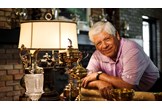
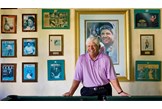
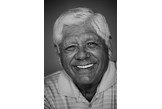
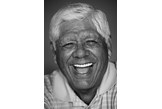
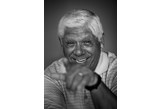
 Beating Jack
Beating Jack The future
The future